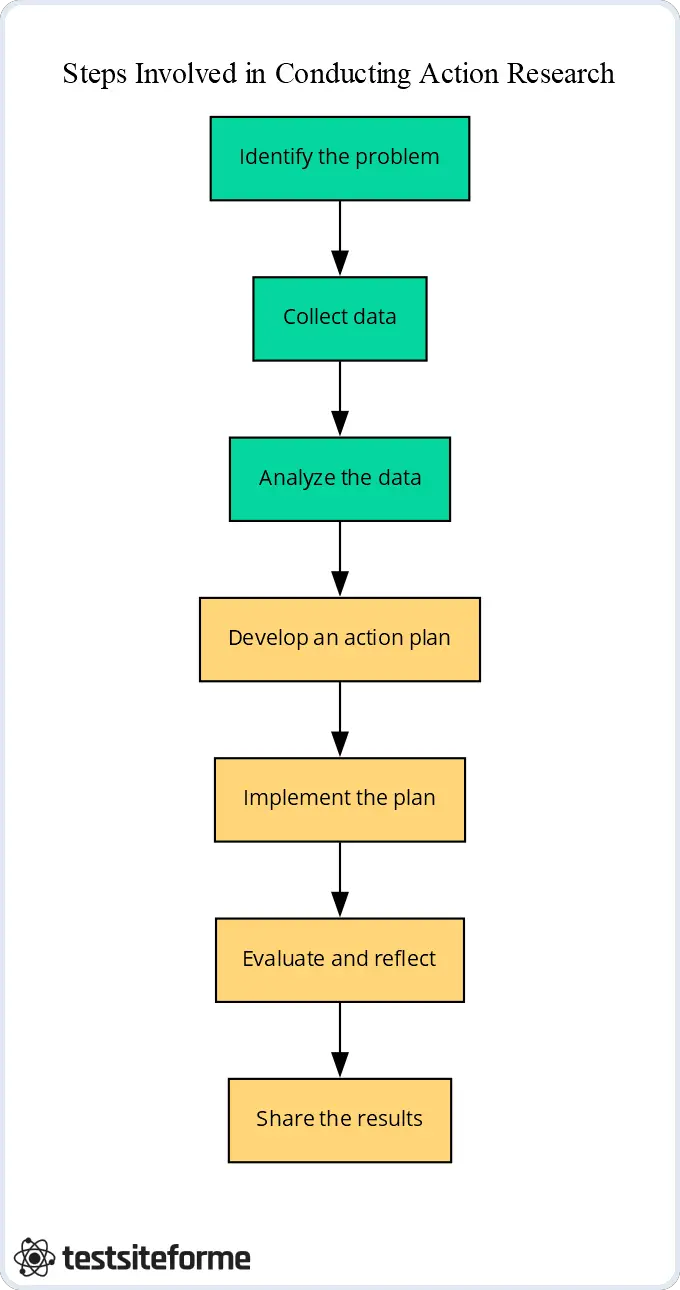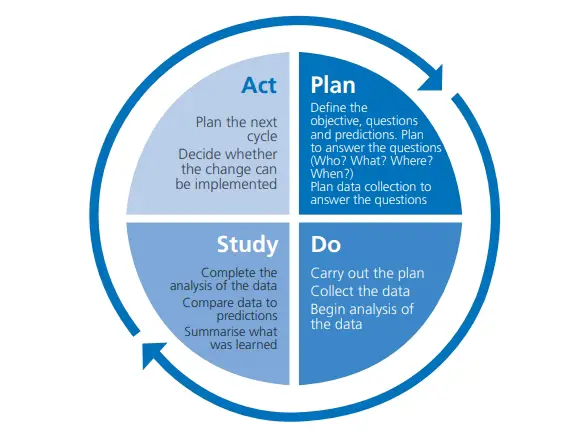As a researcher or educator, you may have heard the term “Action Research” being thrown around in academic circles. But what exactly is it? Is it just another research method, or is there something more to it? Well, my dear reader, Action Research is much more than just a method – it’s a way of thinking and acting that can bring about real change in your community.
In this comprehensive guide, we will delve into the world of Action Research and explore its definition, key concepts, steps involved, types of Action Research, and applications. We’ll also discuss the role of the researcher in Action Research and how data collection and analysis play an important part in this process. Additionally, we’ll examine how collaboration and community engagement are essential components for successful implementation of Action Research projects.
But before we dive into all that juicy content (and trust me – it’s juicy), let’s take a moment to appreciate what lies beneath the surface. You see, at its core, Action Research is about making positive changes happen – whether that be within your classroom walls or out in your local community. It’s about empowering individuals to take action on issues they care about deeply.
Understanding Action Research: Definition and Key Concepts
Action research is a powerful tool for researchers seeking to make a difference in their communities. At its core, action research is about using critical reflection and collaboration to bring about positive change. By engaging with the cycle of action, researchers can gain a deeper understanding of complex issues and work towards more effective solutions.
One key aspect of understanding action research is its focus on critical action. This means that researchers are not just collecting data for its own sake but rather using that data to drive meaningful change. By working collaboratively with community members or other stakeholders, researchers can identify areas where change is needed and develop strategies to address those issues.
To fully appreciate the power of action research theory, it’s important to understand the definition of action research itself. Essentially, this approach involves an iterative process of planning, acting, observing and reflecting which allows for ongoing improvement over time. By engaging in this cycle repeatedly – each time refining their approach based on what they’ve learned – researchers can achieve remarkable results.
In short: if you’re looking for an approach that enables you to make real-world impact through rigorous inquiry into complex problems then look no further than Action Research!
Steps Involved in Conducting Action Research
The process of action research involves several key steps that researchers must follow to ensure an effective and successful study. While there are different aspects of action research, the action research cycle is a fundamental aspect of this methodology. The cycle typically includes four main stages: planning, acting, observing, and reflecting.
- Stage 1: In the planning stage, researchers identify a problem or issue they wish to address through their study. They then develop a plan for how they will gather data on this issue and what actions they will take based on their findings. This might involve conducting surveys or interviews with stakeholders in the community or group affected by the problem.
- Stage 2: After developing their plan, researchers move into the acting phase where they begin implementing changes based on their findings. This could involve testing out new teaching methods in a classroom setting or introducing new policies at a healthcare facility.
- Stage 3: Next comes the observation phase where researchers carefully monitor how these changes are impacting those involved in the study. They may collect data through ongoing observations or surveys to track progress over time.
- Stage 4: Finally, in the reflection stage, researchers analyze their data and reflect on what worked well during their study and what areas need improvement for future studies. By following this participatory action research model throughout each step of the process, researchers can gain valuable insights into complex problems facing communities today while also fostering collaboration among stakeholders.

As you can see from these steps involved in conducting action research above – it’s not just about collecting data but also about actively engaging with communities to find solutions that work best for everyone involved!
Types of Action Research: Which One is Right for You?
When it comes to action research, there is no one-size-fits-all approach. In fact, there are multiple types of action research that researchers can choose from depending on their specific needs and goals. Each type of action research offers unique benefits and challenges, so it’s important to understand the differences between them before selecting a research method.
One popular type of action research is participatory action research (PAR), which emphasizes collaboration between researchers and community members. Another form of action research is classroom-based inquiry (CBI), which involves teachers conducting systematic inquiries into their own teaching practices to improve student learning outcomes. A third type is developmental/action science, which aims to develop new forms of knowledge through the cycle of inquiry.
It’s essential for researchers to consider their theoretical perspective when choosing a form of action research. For instance, critical theory can inform PAR by emphasizing social justice issues in the community being researched. Meanwhile, pragmatic or positivist theories may lend themselves more easily to CBI.
No matter what type you choose or theoretical perspective you take on, all forms share some common characteristics: they involve cycles of reflection and data collection; they prioritize collaboration between researcher(s) and stakeholders; they seek practical solutions for real-world problems; and they aim for transformative change within the community being studied.
Choosing the right form will ultimately depend on your area of interest as well as your personal preferences as a researcher. By carefully considering each option available within types including participatory-action-research , classroom-based inquiry , developmental/action science along with your theoretical framework in mind- you’ll be able to select an approach that aligns best with your goals while also making meaningful contributions towards improving our understanding in various fields such as education or healthcare!
Types of Action Research Comparison
This table compares the characteristics and applications of participatory, collaborative, and emancipatory action research. Use it to determine which type of action research is right for your research goals.
| Type of Action Research | Characteristics | Applications |
|---|---|---|
| Participatory | Collaborative and democratic approach | Community-based research and social justice initiatives |
| Collaborative | Partnership-focused and interdisciplinary approach | Organizational or institutional change initiatives |
| Emancipatory | Critical and transformative approach | Addressing power imbalances and social inequalities in research |
The Role of the Researcher in Action Research
Being an action researcher is a unique role that requires specific skills and approaches. The idea of action research is centered around the belief that researchers can create meaningful change by engaging in collaborative problem-solving with stakeholders. Action researchers are not just passive observers, but active participants who work alongside others to identify problems, generate solutions, and implement changes.
The nature of action research means that it is often conducted in real-world settings rather than laboratory environments. This has several implications for the role of the action researcher:
- Firstly, they must be flexible and adaptable to changing circumstances as they work within complex systems where there are multiple variables at play.
- Secondly, they need to be skilled in building relationships and communicating effectively with diverse groups of people such as teachers, healthcare professionals or community members.
The purposes of action research vary depending on the context in which it is being used. For example, an education-focused project may aim to improve student learning outcomes by developing new teaching practices or curriculum materials through collaboration between educators and researchers. In contrast, a healthcare-focused project may aim to improve patient care experiences by identifying areas for improvement within clinical processes through collaboration between healthcare providers and patients.
Action researchers also have some unique responsibilities when it comes to data collection and analysis during their projects. They must ensure that data collected throughout their project accurately reflects both quantitative measurements (such as survey responses) as well as qualitative observations (such as field notes). Once collected, this data should then be analyzed using appropriate statistical methods or other analytical tools before being presented back to stakeholders for review.
Let me make it clear that, being an action researcher requires a combination of technical expertise such as sound research design methodologies along with strong interpersonal skills like communication abilities necessary for working collaboratively with diverse stakeholder groups through every step involved from planning until implementation phases. By embracing these roles effectively while conducting your own projects you can make strides towards creating meaningful change impacting positively on individuals’ lives across various domains including the educational and healthcare sector too!
As a researcher in action research, it’s important to remember that you are also an active participant in the process. Engage with the community or organization you are studying, listen to their perspectives and needs, and work collaboratively with them to identify solutions and implement changes. By embracing this participatory approach, you can not only produce valuable research but also make a positive impact on the real-world issues you are investigating.
Data Collection and Analysis in Action Research
When conducting an action research project, data collection and analysis are crucial steps that require careful attention. The goal is to gather relevant information that can help inform decisions and improve the situation under study. There are different methods of collecting data in action research studies, including surveys, interviews, observations, and focus groups. Once data is collected, it must be analyzed to identify patterns or trends.
One popular model for analyzing data in action research is the Plan-Do-Study-Act (PDSA) cycle. This model involves four stages:
- planning what will be done;
- doing it;
- studying the results;
- and acting on what has been learned.
The PDSA cycle allows researchers to make adjustments as they go along based on their findings.

(PDSA) cycles and the
model for improvement” by NHS England.
Examples of action research projects using the PDSA cycle include a study conducted by a school district to improve student attendance rates through parent involvement. In this case, researchers conducted surveys with parents to identify barriers preventing them from being more involved in their child’s education. They used this feedback to develop new strategies for engaging parents and tracked attendance rates over time.
Collaboration with community members is crucial when collecting and analyzing data in action research studies since community members often have valuable insights into local issues or concerns that may not be apparent otherwise. By involving these stakeholders in the process of identifying problems and developing solutions together, researchers can ensure that their work reflects the needs of those they serve.
While collecting and analyzing data can be difficult at first when conducting an action research project – it doesn’t have to be! With proper planning using models such as PDSA cycles along with collaboration among community members’ insights into local issues or concerns – we should all feel confident about our ability as researchers to conduct successful Action Research projects!
Comparison of Qualitative and Quantitative Research Methods
This table compares the different data collection and analysis techniques used in qualitative and quantitative research methods.
| Research Method | Data Collection Techniques | Data Analysis Techniques |
|---|---|---|
| Qualitative | Interviews, Focus groups, Surveys, Observations | Content analysis, Thematic analysis, Discourse analysis |
| Quantitative | Surveys, Experiments, Observations | Statistical analysis, Regression analysis, Factor analysis |
The Importance of Collaboration and Community Engagement in Action Research
Collaboration and community engagement are crucial components of any successful action research project. In fact, some researchers argue that collaborative action research is the only true form of action research. Participatory action, social action, participant observation, and critical reflection are all methods that involve working closely with members of the community to identify problems and develop solutions.
One example of this type of collaboration in practice is a healthcare provider partnering with patients to improve care delivery. The patients become active participants in the process rather than passive recipients of treatment. By involving them in decision-making processes and utilizing their input for developing interventions or programs tailored to their needs, healthcare providers can deliver more effective care.
Another example is a teacher working collaboratively with students and parents to improve student learning outcomes. This may involve gathering data on student performance through assessments or surveys, analyzing that data together as a group, identifying areas for improvement, and then designing interventions or activities based on those findings.
By engaging with communities directly affected by an issue under investigation through collaboration efforts like these two examples above , researchers gain important insights into not just what needs fixing but also how best to fix it using social actions like implementing policies at government level or organizing grassroots movements among others . Additionally, community engagement builds trust between researchers and participants and ensures that the results produced by the study are relevant both academically as well as practically.
To reiterate, collaborative action research requires investing time upfront building relationships within communities before even starting any work on solving identified issues . This investment pays off later when everyone involved feels invested in decisions made during implementation phases because they have had input into those decisions from start-to-finish resulting in better outcomes overall.
Incorporate collaboration and community engagement into your action research process to ensure that the solutions you develop are relevant, effective, and sustainable. Engage stakeholders early on in the research process and actively involve them in decision-making to build trust and create a sense of ownership over the project. By working together with communities, you can make a real difference in people’s lives while generating valuable data for your research.
Applications of Action Research in Education, Healthcare, and Beyond
Action research has been applied in various fields, including education and healthcare, to improve educational practice and professional development. The use of action research within educational contexts has become increasingly popular due to its focus on reflective practice and the ability for practitioners to take ownership of their learning. In professional practice, action research allows practitioners to reflect on their experiences within a specific context and make informed decisions about future practices.
In educational settings, action research is often used as a means of improving teaching effectiveness. Teachers can identify areas where students struggle with certain concepts or skills by collecting data through observations or assessments. From there, they can develop interventions that target those areas of need and implement them in the classroom. By continuously reflecting on the effects of these interventions through ongoing data collection and analysis, teachers can adjust their strategies over time to achieve better outcomes for their students.

Similarly, healthcare professionals also use action research approaches to improve patient care outcomes through an iterative process of inquiry-based problem-solving. For example, nurses may conduct an action research project focused on reducing falls among elderly patients by implementing fall prevention measures such as regular monitoring rounds or installing handrails in high-risk areas.
Beyond education and healthcare fields themselves, other professions have also adopted this approach for professional development purposes. Action Research provides opportunities for individuals working across industries like business management consulting where you could collect data about your clients’ needs before providing recommendations based on the findings.
Action Research isn’t only limited to education; it has applications beyond it too – from healthcare settings aimed at improving patient care outcomes all way up towards business management consulting! This methodology emphasizes reflective practice while empowering practitioners’ decision-making abilities based upon empirical evidence gathered throughout each iteration conducted during projects undertaken using AR approaches.
Challenges and Limitations of Action Research: How to Overcome Them?
Action research can be a powerful tool for generating change and improvement in various fields, from education to healthcare. However, like any research method, it also has its challenges and limitations that researchers must overcome to ensure the validity and reliability of their findings. In this section, we will explore some of these challenges and provide tips on how to address them.
One challenge that researchers face when conducting action research is developing effective action plans based on their findings. While identifying areas for improvement is an essential part of the reflective process, translating those insights into actionable steps can be challenging. To overcome this obstacle, classroom teachers or other stakeholders should be involved in the process of reflection and planning. This collaborative approach helps ensure that everyone’s perspectives are heard and considered when developing solutions.
Another limitation of action research is ensuring accurate data collection and analysis. The reflective process may lead to biased interpretations or subjective assessments if not approached with care. Researchers should use multiple methods for collecting data (such as surveys, interviews, observations) to triangulate their results’ accuracy better. Additionally, using statistical tools can help analyze qualitative data more objectively.
Finally, it’s worth noting that not all problems are suitable for action research approaches; some issues may require different methodologies altogether. Thus careful consideration should be given before deciding whether or not to use an action research approach in addressing a problem.
While there are certain challenges associated with using an action-research approach they can often be addressed by following best practices such as collaboration between stakeholders during the reflection process; being thorough with data collection techniques; using appropriate statistical analyses where necessary; reflecting carefully beforehand about whether or not Action Research is suited to solving a particular issue at hand – among others!








